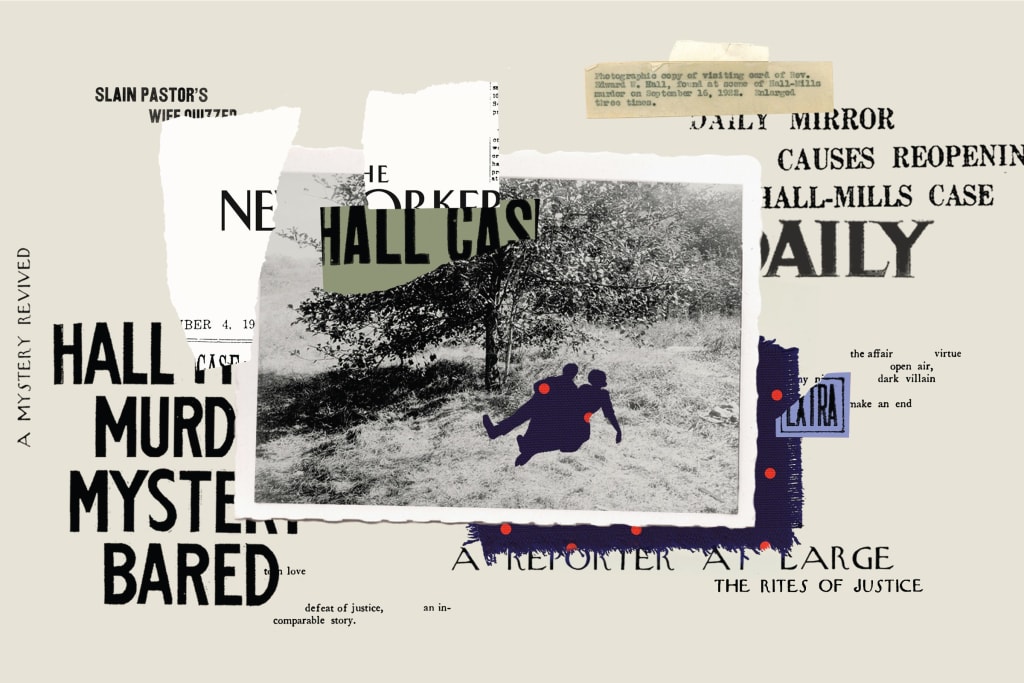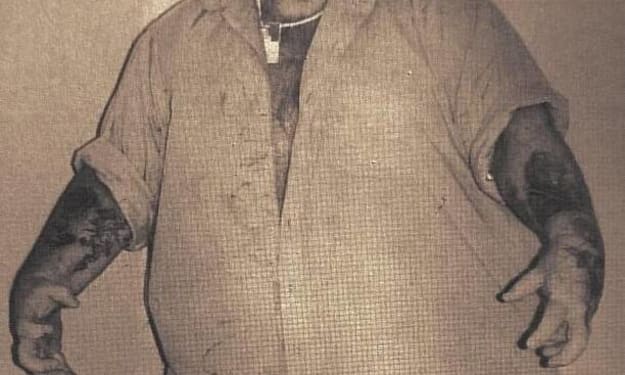A Stroll Down Lovers Lane: The Hall-Mills Mystery
A Gripping Tale of Love, Betrayal, and Murder in 1920s New Jersey

Introduction
The Hall-Mills murder case, also known as the Lovers Lane murder, is one of the most infamous unsolved mysteries in American history. This case, involving the brutal murder of a minister and a choir singer, has captivated the public for nearly a century. The story is filled with scandal, intrigue, and a cast of characters straight out of a noir novel. Let's delve into the details of this tragic tale and the subsequent investigation.
The Victims and Their Backgrounds
Edward Hall
Edward Hall was born in 1881 to middle-class parents in Brooklyn, New York. He grew up to become a minister, serving at various churches in New York and New Jersey before accepting a position at St. John's Episcopal Church in New Brunswick in 1909. It was here that he met his future wife, Frances Stevens.
Frances Stevens
Frances Stevens, born in 1874, was an heiress to the Johnson & Johnson surgical supply fortune. Despite her wealth, she was often described as a "homely" woman, not fitting the societal expectations of beauty for someone of her status. Frances and Edward married in 1911, with Frances being 37 and Edward 30. They moved into Frances' family home, which she shared with her brother, Willie Stevens.
James and Eleanor Mills
James Mills, born on January 27, 1878, worked as a shoemaker before becoming the janitor at St. John's Church. Eleanor Mills, his wife, was a soprano in the church choir and an active member of the church's ladies group. They married when Eleanor was just 15, and together they had two children, Charlotte and Daniel. The Mills family lived a modest life, struggling with financial difficulties as James earned only $35 a week.
The Affair
Eleanor Mills and Edward Hall began an affair that became the talk of the town. While their spouses, Frances and James, claimed to be unaware, the rest of the community seemed well-informed. By 1919, Edward was visiting Eleanor daily, and their relationship was an open secret among church members and townspeople alike.
The Night of the Disappearance
On the night of September 14, 1922, neither Edward nor Eleanor returned home. Frances and her brother Willie went to search for Edward at the church, but found no trace of him. Meanwhile, James Mills also searched for Eleanor without success.
The Grim Discovery
Two days later, on September 16, a young couple taking a stroll down Lovers Lane in Somerset, New Jersey, discovered the bodies of Edward Hall and Eleanor Mills under a crab apple tree. Edward was dressed in a dark gray suit, his face covered with a Panama hat, while Eleanor lay beside him with her left hand resting on his knee. The scene was disturbingly serene, with their bodies posed as if in a final embrace.
The Investigation Begins
When the police arrived, they found love letters scattered around the bodies, written by Edward and Eleanor, confirming their affair. Edward had been shot in the head at close range, and Eleanor had been shot three times, with her throat gruesomely slashed. The brutality of Eleanor's wounds suggested a deep-seated rage.
Public Frenzy and Initial Suspicions
The Hall-Mills case quickly became a media sensation. The crime scene turned into a morbid tourist attraction, with people flocking to see the spot where the bodies were found. This public interest hampered the investigation, as curious onlookers contaminated potential evidence.
The Pig Woman's Testimony
The investigation took a turn when Jane Gibson, a pig farmer living near Lovers Lane, came forward with crucial information. She claimed to have heard gunshots and a woman's scream the night of the murder. Despite her credible account, Gibson was ridiculed by the media and dubbed "The Pig Woman." Her testimony was further discredited by her own mother, who publicly called her a liar during the trial.
The Arrests and Trial
In July 1926, Frances Hall and her brothers, Willie and Henry Stevens, along with their cousin Henry, were arrested and charged with the murders. The trial was a spectacle, drawing enormous public interest. The defense attacked Jane Gibson's credibility, and despite over 80 witnesses and compelling evidence, the jury found all four defendants not guilty.
The Aftermath
The case remains unsolved to this day, with no one ever held accountable for the murders. Frances and her family sued several newspapers for slander and libel, and the cases were settled out of court. The Hall-Mills mystery has inspired numerous theories and continues to intrigue true crime enthusiasts.
Conclusion
The Hall-Mills case is a tragic tale of love, betrayal, and murder. Despite the passage of time, the mystery remains unsolved, leaving us to wonder who was truly responsible for the deaths of Edward Hall and Eleanor Mills. The case highlights the complexities of human relationships and the dark undercurrents that can lead to such heinous acts. As we reflect on this story, we are reminded of the fragility of life and the enduring quest for justice.
About the Creator
Sally A
Ambitious lady that loves animals, health, self-development & beauty 💕
Animal lover 🐾 | Health enthusiast 💪 | Self-development junkie 🌱 | Beauty explorer 💄 | True crimes & mystery enthusiast 🕵️♀️ | Let's journey together! 💫
Enjoyed the story? Support the Creator.
Subscribe for free to receive all their stories in your feed. You could also pledge your support or give them a one-off tip, letting them know you appreciate their work.






Comments
There are no comments for this story
Be the first to respond and start the conversation.